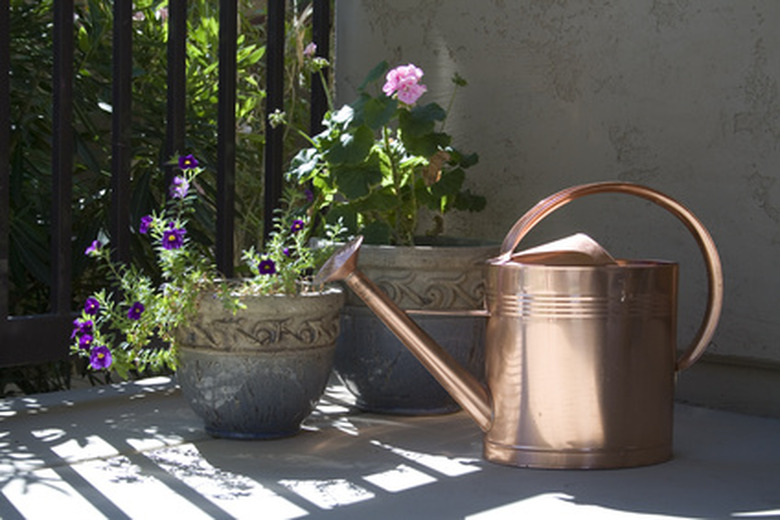How Do Plants Survive In A Terrarium?
Terrariums are often referred to as miniature ecosystems. A community of various plant life and other living things can co-exist inside terrariums. Although there are snakes, frogs and even insect terrariums, a typical image of a terrarium is one containing multiple plant species. The terrarium atmosphere can successfully provide for all the plant inhabitants.
Facts
Bottle gardens, as terrariums are sometimes called, replicate the natural habitat of the plants that reside in them. According to a University of Florida Environmental Horticulture article, Nathaniel Ward is credited with having developed what has come to be known as the terrarium. There are countless species of plants that thrive in a terrarium, even though the humid atmosphere is not good for cacti and other water-retaining plants.
Function
In the self-sustained terrarium greenhouse, compatibility is crucial to plant existence. The Franklin Institute Resources for Science Learning provides a primary reason plants can survive in a terrarium: "...behavior influences the survival of a species." A competitive behavior is not necessary for survival when different plants require similar maintenance. This enables the species to thrive together. The process of photosynthesis causes plants to use oxygen and release carbon dioxide. Water vapor is created in the humid environment and then absorbed back into the soil and roots of the plants. Indirect sunlight is necessary for this cycle to continue, however, as direct sun will cause a boiling effect inside the terrarium.
Types
Typically, terrariums are created in small glass containers. Although no particular shape is required, the best container to use is a standard bottle that has a narrow neck and a large opening. This makes it easier to arrange the plants and also helps to keep the atmosphere humid inside. A very humid environment is essential to plant survival. Among the plants that National Geographic Kids lists as good for terrariums are: begonias, spider plants, miniature ferns, African violets and baby tears. These and other dwarf-sized plants survive well in terrariums because they grow low and at a slow pace.
Considerations
One of the major advantages of growing plants in a terrarium is that they normally require a lot less maintenance and care than a traditional garden, but there are those who prefer bigger terrariums and don't mind the extra work involved in pruning and trimming larger plants down. The bird's nest fern, weeping fig and English ivy are just a few of the larger plants that are capable of survival in a terrarium.
Prevention/Solution
To help ensure the survival of terrarium life, it is mandatory to properly select the right plants and prevent overcrowding. Plants grow in the direction of the sun, so another requirement for healthy plants is to periodically rotate the container. This will prevent the plants from becoming lop-sided from growing in one direction. Generally, compost is used as an additive to create rich soil for plants to grow in. In terrariums, however, rich compost or soil should be avoided to prevent accelerated plant growth.
